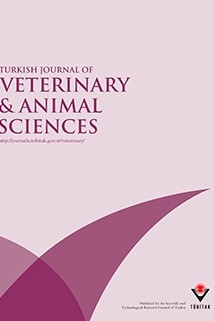
Turkish Journal of Veterinary and Animal Sciences
Yazarlar: Nezir Y. TOKER
Konular:-
Anahtar Kelimeler:Coprolite,Analysis,Dog,Necropolis,Van-Yoncatepe
Özet: This study presents the results of the analyses of the coprolite material found among the skeletal remains in M6, a burial chamber discovered in the necropolis of the Van-Yoncatepe Castle, which dates back to the beginning of the 1st millennium BC (Early Iron Age). For this purpose, microbiological and parasitological examinations, as well as biochemical analyses have been carried out. Because the crystallisation values were so high, the parasite evidences could not been revealed. As a result of the microbiological examination, no micro-organisms were isolated. As for the biochemical analyses performed, the material was tested for glucose, uric acid, cholesterol, triglyceride, total protein, albumin, calcium (Ca), phosphorus (P) and magnesium (Mg). Attempts were then made to ascertain the feeding habits of the Yoncatepe dogs.